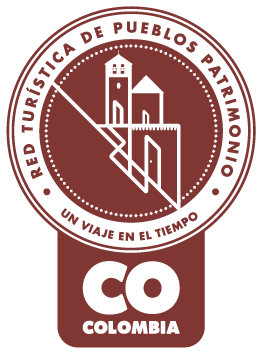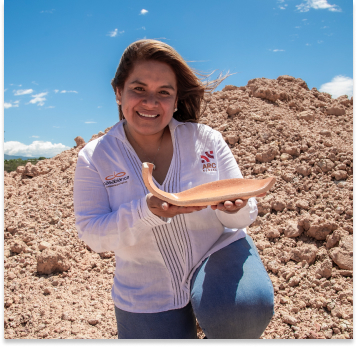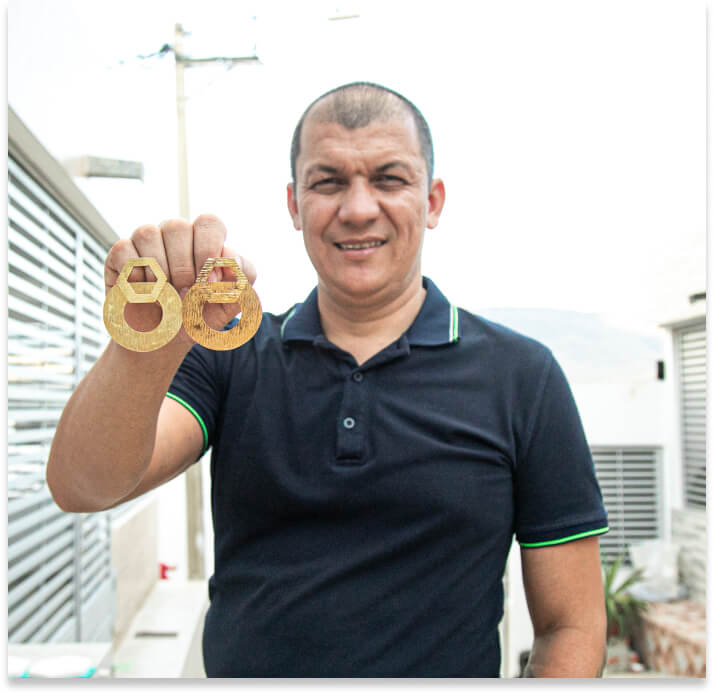Norte de Santander Route
This department boasts several milestones. Having the municipality where the first Constitution of Colombia was signed in 1821, Villa del Rosario, is one. That’s why its inhabitants proudly claim to be “”from the place where it all began.”” Furthermore, the Cúcuta railway was the first iron road in which construction a private company invested, in 1878. To top it off, they are also known as aviation pioneers, as Camilo Daza from Pamplona was the first Colombian to pilot an airplane, which is why the airport bears his name. As neighbors to the Venezuelan border, the people of Norte de Santander share common roots and cuisine. On this journey, you’ll get to hear firsthand about the ties that the artisan community has had with their brothers just a river away, as trade between both societies thrived for decades.
Guided by the artisans we recommend, you’ll discover materials such as wicker, clay, metals, wood, and horn, which will help you understand another piece of this territory. One that makes us recognize its historical, heritage, and religious significance. The devotion to the Virgin Mary is strong because, thanks to their faith, the people of Cúcuta resurrected after the devastating earthquake that struck the city on May 18, 1875. So don’t miss the chance to explore the Gothic style of the Perpetuo Socorro Church and the Christ the King monument in Cúcuta, or the historical temple in Villa del Rosario. Also, participate in the renowned pilgrimages to the Virgin of Belén in the neighboring municipality of Salazar de Las Palmas, 54 kilometers from the capital to the southwest, pass by the Sanctuary of the Virgin of Torcoroma in Arboledas, and conclude this mystical tour by visiting Pamplona’s important network of churches, which earned it the nickname “”the mitred city.””
However, Norte de Santander also boasts unparalleled natural riches, such as the Unique Natural Area of Los Estoraques, an amazing rock formation located in the municipality of La Playa de Belén in the northwest of the department, or the Santurbán Páramo, if you decide to head south. In between, in Salazar and Arboledas, birdwatching, hiking, and extreme sports like canyoning or rappelling are tremendous tourist attractions. Lastly, with an extremely delicious flavor, you’ll find its cuisine, where standouts include chickpea pie, roasted goat, goat milk caramel, pigeon broth, and rampuchada, a typical fish recipe from El Zulia. And, of course, the coffee, a regional icon deserving of a route and exploration.
Embark on a journey full of history

Artisans along the way
Artisans along the way
We recommended this tour
Schedule the visit in advance with the artisans.
Carry cash
3 days
Car or Bus

CÚCUTA
In the capital of the department, you can take advantage of the diverse offering of heritage tours that allow you to discover and visit historic places such as the Julio Pérez Ferrero Public Library, the Clock Tower, La Victoria Park, Quinta Teresa Cultural Center, and the Christ the King Monument. Try the traditional chickpea pastries and the most delicious goat recipes. Close to each other, we want you to meet three artisan tradesmen, from its creators: pottery, carpentry, and metalwork.
VILLA DEL ROSARIO – BOCHALEMA – CHINÁCOTA
On the second day, we suggest you embark on a journey to the south. Just 10 minutes from the capital, in Villa del Rosario, a municipality renowned as the birthplace of the patriot Francisco de Paula Santander, you’ll find the Museo Casa Natal del General Santander and the Academy of History, both excellent examples of republican architecture. This is a national historical heritage city and the place where three countries were founded: Venezuela, Ecuador, and Colombia. Explore its famous historic center, and take the opportunity to visit Reinaldo Soto, a wicker master. Get lost in its streets filled with memories and visit the traces of where the first Constitution was signed in 1821, including the Ruins of the Historical Temple with the large dome protecting the image of the Libertador. A must-visit is the Nuestra Señora del Rosario Church. If you want to savor local cuisine, don’t miss Los Ochoa, a restaurant offering typical departmental delights and famous grilled chicken. Then, head to Bochalema, which is an hour away, and meet the Meneses family, hornwork experts. We recommend spending the night in Chinácota, just 32 minutes away. There’s a wide gastronomic offer ¡52 restaurants!, and glamping sites are very popular.


CHINÁCOTA – PAMPLONA
Before you set off on your journey to Pamplona, we invite you to visit Olga Parra, a very special jeweler at her farm on the outskirts of Chinácota. If you’re interested in hiking, there’s the beautiful Iscalá ravine. Now, head to Pamplona. This city is famous for its Holy Week processions, just as important as those in Popayán and Mompox. If you decide to travel during those dates, don’t miss the International Coral Festival of Sacred Music. The 40-kilometer road trip between Chinácota and Pamplona offers beautiful scenery. You’ll be able to admire the lovely valley where this “mitred” or “patriot” city, as El Libertador called it, is located, near the Pamplonita River. The climate, a bit milder, is very welcoming. There, you can visit the Santa Clara Cathedral, the Shrine of the Lord of Humilladero, and the Archbishop’s Palace, among many other religious landmarks, as well as discover its past in the Colonial House and the traces of its republican architecture seen in the historic center. Also, take a leap in time and visit the Modern Art Museum Ramírez Villamizar, named after the famous painter and sculptor born there. Don’t miss out on trying the typical snacks of this city.

Pueblo Patrimonio
La Red Turística de Pueblos Patrimonio de Colombia es un programa especial del Ministerio de Comercio, Industria y Turismo, ejecutado por FONTUR, que trabaja con 17 municipios de Colombia que poseen declaratoria de Bien de Interés Cultural (BIC) a nivel nacional para su valoración y proyección mediante el turismo, generando así más oportunidades de desarrollo y sostenibilidad en las comunidades.

La Medalla a la Maestría Artesanal es un galardón que Artesanías de Colombia entrega anualmente, con el cual se hace un reconocimiento a aquellos artesanos, empresas y comunidades artesanales que, contando con una trayectoria destacada, sobresalen a nivel nacional por su excelencia en el oficio así como por preservar el quehacer artesanal.

Denominación de Origen
Es un signo distintivo que identifica productos reconocidos o famosos por tener una calidad o características específicas derivadas esencialmente del lugar de origen y la forma tradicional de extracción, elaboración y producción por parte de sus habitantes. La protección conferida sobre una Denominación de Origen implica que ninguna persona puede identificar con la denominación protegida productos iguales o similares a los amparados, cuando no provengan del verdadero lugar y no cumplan con las características o calidades que le han dado la reputación al producto reconocido. Las Denominaciones de Origen para productos artesanales colombianos que han sido protegidas por la Superintendencia de Industria y Comercio en nuestro país son actualmente 12.
No puede copiar contenido de esta página
































































